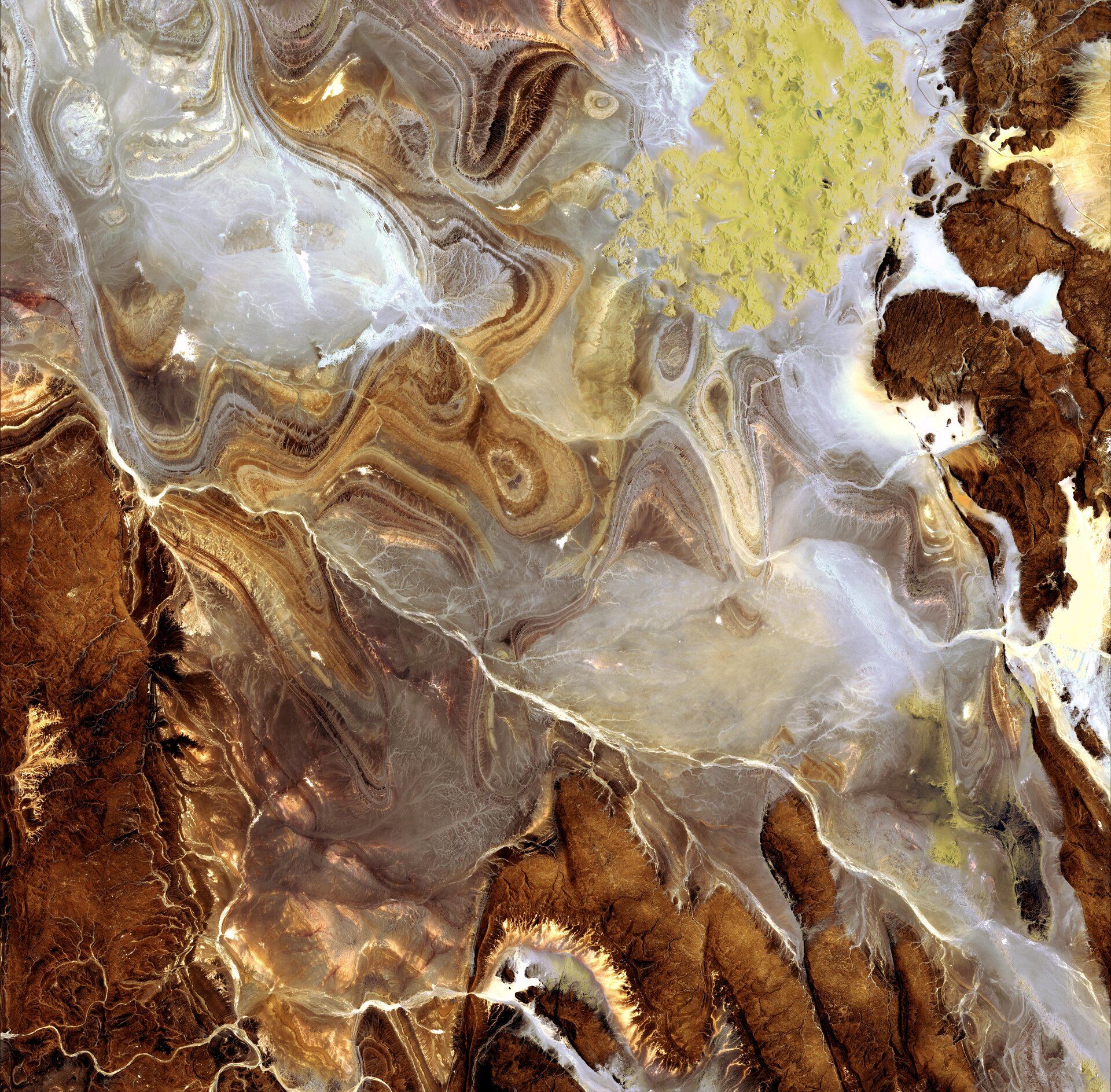Earth from Space: ‘Land of Terror’
The image shows the extraordinary landscape of the Tanezrouft Basin, one of the most desolate parts of the Sahara desert, in south-central Algeria. The region is known as ‘land of terror’ because of its lack of water and vegetation.
Most of the face of the Sahara stretching across Northern Africa is bare stone and pebbles rather than sand. With little vegetation present, the landscape is modified by strong, nearly constant wind erosion.
As visible, this region is characterised by dark sandstone hills, steep canyon walls, salt flats (white), stone plateaus, sandstone outcrop patterns of concentric loops and sprawling seas of multi-storey sand dunes known as 'ergs'. Erg Mehedjibat, which appears as a yellow bouquet of flowers (upper right), is made up of a cluster of small star dunes that grow upward rather than laterally.
Occupying approximately 10% of the African Continent, the Sahara is the largest desert in the world. It covers an area of about 9 million sq km over parts of Algeria, Chad, Egypt, Libya, Mali, Mauritania, Morocco, Niger, Tunisia and the Sudan.
The Algerian Sahara makes up more than 90 percent of the country’s total area. Major oil and natural gas deposits lie beneath the Sahara’s surface, contributing to Algeria’s position as one of the wealthiest African nations. As large as the whole of Western Europe, Algeria is the second-largest country in Africa, after the Sudan.
Japan’s ALOS (Advanced Land Observing Satellite) captured this image on 24 June 2009 with its Advanced Visible and Near Infrared Radiometer type-2 (AVNIR-2) instrument, which is designed to chart land cover and vegetation in visible and near infrared spectral bands with a resolution of 10 m.
ESA is supporting ALOS as a Third Party Mission, which means ESA utilises its multi-mission European ground infrastructure and expertise to acquire, process and distribute data from the satellite to its wide user community. To date, ESA has delivered ALOS data to more than 270 research and application projects, serving some 500 users.






